Unravelling the mystery of the unknown bairn
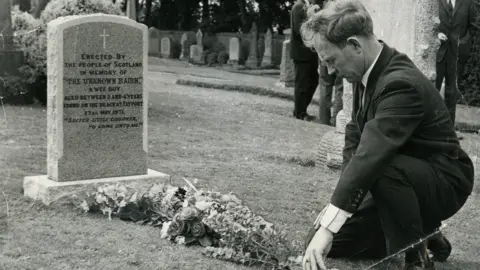 W Brown
W BrownIan Robertson and his five-year-old son had walked less than 50 metres along Tayport beach when they saw something floating among the seaweed, not far from the water's edge.
It looked odd and out of place, like an outsized plastic doll.
Ian waded out into the cold North Sea waters and made a heartbreaking discovery.
It was the body of a young boy, aged between two and four, wearing only a pyjama top with a shirt over it.
It looked like the body had been in the water for some time and it had started to decompose. The features on the child's face had been rubbed away from being dragged over rocks.
Ian, who was the village postman, knew it was not unheard of for bodies to wash up on the shores of the Firth of Tay.
Perhaps the boy had come from the sea having fallen off a boat or been washed down after falling in upriver?
But no-one ever reported the child missing and the mystery of who he was attracted worldwide press coverage.
It would take more than 50 years for vital clues to the identity of the "unknown bairn" to finally be revealed.

You can listen to all nine episodes of The Cruelty - A Child Unclaimed, presented by Davie Donaldson and produced by Kate Bissell, from BBC Scotland Productions, on BBC Sounds.

Ian made the grim discovery on the afternoon of 23 May 1971.
We started looking into the case in 2021 for our podcast The Cruelty - A Child Unclaimed.
Our investigation was sparked by a retired police officer, who had worked for Fife CID, who said he had clues to the identity of the boy but no-one had ever followed up his claim.
Bob Beveridge had been one of the detectives who worked on the case before he retired from the Scottish Crime Squad to became an antiques dealer in Falkland, about 20 miles from Tayport.
He had always felt the circumstances of the case suggested a link to the Traveller community.
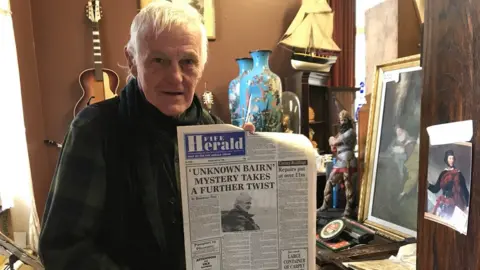
He told us of one interview the police had carried out which seemed to confirm this.
Mr Beveridge said they had interviewed a man and woman who had been described by police working on the case as "tinkers" due to their speech and dress.
They had been overheard on a bus. The woman had been crying bitterly, moaning "oh my bairn, my bairn", and she was quickly interrupted by her husband and was told to "shut up, you'll get us both to jail".
Mr Beveridge said the pair had explained their upset to police by saying their son had been taken into care.
This highlighted a scenario we were already considering in relation to the unknown bairn. Perhaps the boy had died in care and it was covered up. Maybe his family did not know he had died?
The presenter of our podcast, Davie Donaldson, comes from the Traveller community and told us the care angle chimed with something he knew about the way his community had been treated at that time.
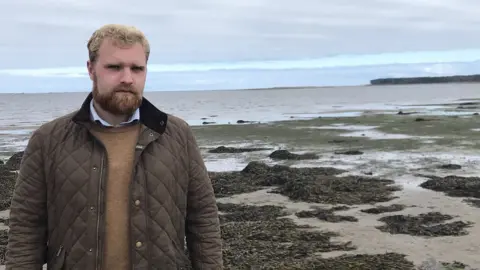
Between the 1950s and 1970s, many Traveller children were placed in care by a combination of authorities including officers from the local authority, charity inspectors, and the police.
Davie's own father had been taken into care but after a couple of years was returned home at the age of four.
For the Traveller community, the care service that split apart their families became known as "The Cruelty".
Many of the children had come from loving and caring homes but life on the road was not deemed suitable by the authorities.
Many described suffering physical, emotional and sexual abuse in the children's homes, foster homes, and residential schools - and the extent of abuse of children in care is currently subject to a public inquiry.
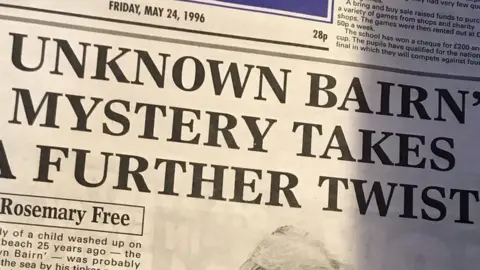
Mr Beveridge, the retired detective, told us the male Traveller on the bus would later go on to play the bagpipes outside Falkland Palace, just across the square from his antiques shop.
He also mentioned that the man may have had a son who later lived in a caravan in the village of Gateside, about five miles from Falkland.
The son used to go everywhere on a bike but had apparently died of motor neurone disease.
To find the name of this 'boy on the bike' we researched who used to run farms in the area between 1970 and 1990.
We tried to find out which had an old caravan where a Traveller used to live.
Eventually we were put in touch with a farmer who remembered a Traveller who lived in a caravan on a neighbouring farm.
His friend also remembered him and confirmed that he used to go everywhere on his bike, that he died of motor neurone disease and that his parents were Travellers who camped up on the hill behind his village.
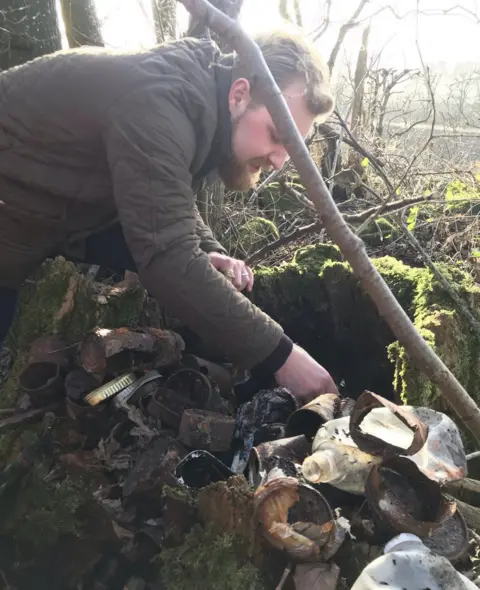

Now we had a name which we could use to find his death certificate.
The name of the bagpiper was given to us by other locals in Falkland and his surname matched the name of the father on the death certificate of the boy on the bike.
We now had a possible surname.
Our presenter Davie began to piece together the history of the family through research in Scotland's national archives.
The boy on the bike was dead but he had a sister who was named on his death certificate as next of kin.
Further records searches revealed that the sister had given birth to a son in 1969. Her boy would have been two in May 1971 - the same age as the unknown bairn.
Davie talked to members of the Traveller community to see if they had heard of this family.
Eventually he was able to establish that the woman we believed was the sister was the likely mother of the unknown bairn.
She was still alive but was in such ill health she was unable to talk to us.
However, Davie found another relative, Martha, who would have been the boy's second cousin.
We shared what we had found out with Martha and by looking at her family tree we were able to confirm we had the right details.
We are confident we have finally uncovered the identity of the unknown bairn but we still don't know the circumstances of the death or even whether he had drowned or had been placed in, or near the water, after death.
Speaking to other relatives of the woman we identified as the mother, Davie discovered the story of the unknown bairn had been something of an open secret in the Traveller community but distrust of authorities meant no-one would come forward to the police.

Although the boy had remained unidentified by authorities for more than 50 years, he had not been forgotten.
His body was buried in Tayport cemetery, which overlooks the River Tay, just a mile or so from where his body had been found.
For years, Ian Robertson - the postman who had found the body - and his family had tended his grave.
Ian always said his connection with the boy went deep and he was now part of his family.
When he died in 2007, his family requested he be buried next to the child.
Each year, the family held a memorial for the boy at the grave.
So it was that on 23 May 2022, 51 years after Ian Robertson had taken that walk along Tayport Beach, that the connection between the life and death of the unknown bairn was finally made.
The boy's second cousin met the Robertson family.
We met Martha in a car park next to the Tay Bridge and took her to the memorial ceremony.
There she met Avril and Lynn, the daughters of Ian Robertson and Irene, his wife.
Martha was able to do something she had longed to do and say thank you to them for taking care of her second cousin.
Under rainy skies, overlooking the silvery waters of the River Tay, the mystery of why no-one came forward to claim the unknown bairn had finally been laid to rest.
